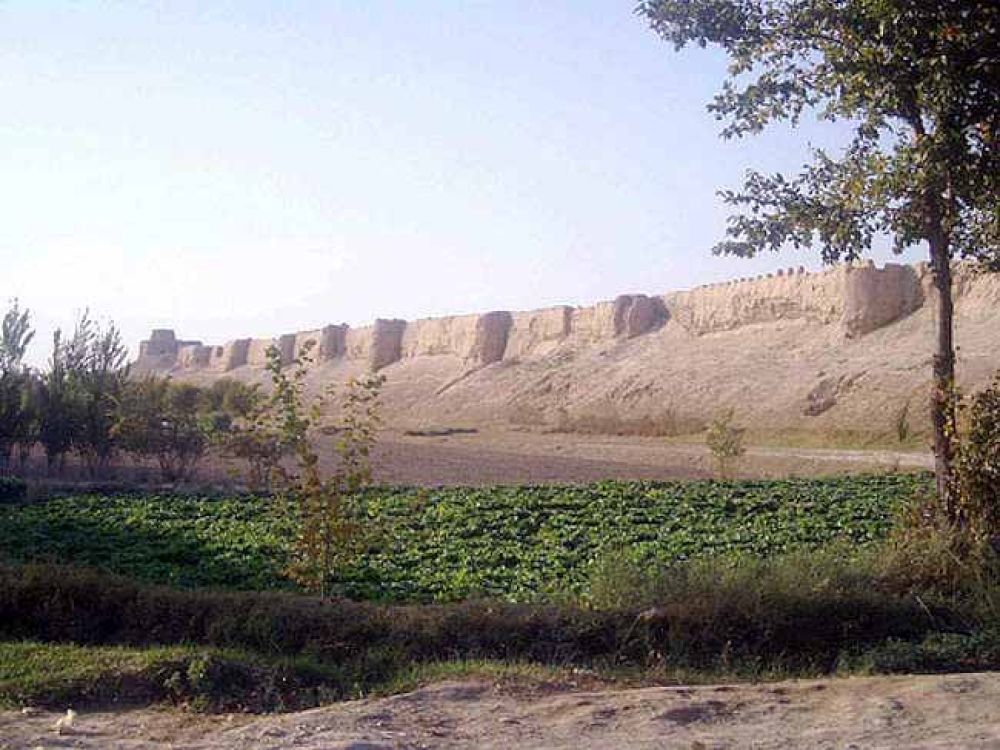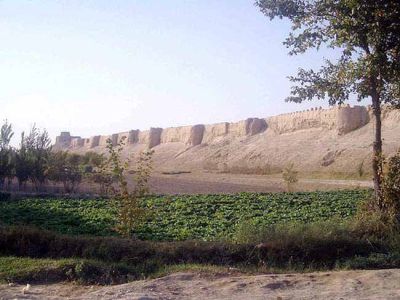

The Shrine of Hazrat Ali, also known as the Blue Mosque, is a stunning landmark in Balkh that draws visitors from around the world. This historical mosque stands as a testament to the region's rich Islamic heritage. Revered as the final resting place of Ali ibn Abi Talib for some Muslims, the mosque's intricate blue tiles and elegant architecture command awe and respect. Visitors can explore the mosque's intricate designs, attend the peaceful prayer sessions, or simply admire the spiritual aura of the place. The mosque's environment is serene, with pigeons flying overhead and locals offering their prayers, creating a memorable atmosphere. The shrine is not only a religious site but also a social gathering place for the community, reflecting the intertwined nature of culture and faith in this part of Afghanistan.
Bactria Modern History Museum is a key historical institution housing artifacts and exhibits that trace the rich historical tapestry of Balkh, which was once the epicenter of the Bactria civilization. Visitors can immerse themselves in displays showcasing pottery, coins, tools, and manuscripts that chronicle the region's evolution from antiquity to modern times. The museum provides a detailed narrative of the political, cultural, and economic shifts that have shaped the region, with knowledgeable guides offering insights into each exhibit. This educational tour is a journey through time, ideal for history enthusiasts eager to understand the profound legacy of one of the oldest inhabited regions in the world, known for its cross-cultural exchanges as a key hub on the ancient Silk Road.
The Ancient Walls, also known as the Haji Piyada, date back to the pre-Islamic era and are some of the oldest remains in Balkh, Afghanistan. Embark on a guided walking tour to explore the formidable ruins of this ancient fortress. The walls, which once guarded a thriving city, stand testament to Balkh's historical strategic importance. During the tour, visitors learn about the city's role as a center of the Persian Empire, its significance along the Silk Road, and its conquests by various empires. Marvel at the resilience of these structures that have withstood the ravages of time and conflict. This outdoor, educational stroll provides ample opportunities for photography and reflection on the ephemeral nature of empires and the vitality of historical preservation.
Take a journey back in time with a visit to the ruins of the ancient city of Balkh, known historically as Bactra. Once a flourishing center of Zoroastrianism and later a major Buddhist site, the city has witnessed numerous civilizations rise and fall. Today, the ruins offer a hauntingly beautiful glimpse into its storied past. Walkthrough remains of city walls, fortifications, and archaic buildings as you listen to stories about Balkh's role as an important hub on the Silk Route. Visitors are encouraged to wander carefully among the ruins and contemplate the rich history beneath their feet. This excursion unveils the layers of history engraved in Balkh's landscape and is an essential visit for those intrigued by Afghanistan's archaeological treasures.
Tepe Rustam and Takht-e-Rustam are intriguing archaeological sites that captivate visitors with their historical significance and cultural allure. Tepe Rustam boasts an impressive stupa monastery complex, while Takht-e-Rustam stands out with its unique and ancient hollowed-out stupa that is etched into the rock—an architectonic feat of the Buddhist era. Tourists can join guided tours to learn about the history of these sites associated with the spread of Buddhism in the region, and marvel at the melding of art, religion, and ancient craftsmanship. Exploring these sites not only offers a scenic view but also a deeper understanding of the mystical past and the intricate stonework that has survived through the centuries.
The No Gombad Mosque, also known as the Nine Cupola Mosque, is an ancient architectural relic in Balkh offering insights into the early Islamic architecture of the region. Believed to be one of the earliest mosques in the Islamic world, this site presents a unique opportunity for visitors to appreciate the mosque's antiquated design. With its remarkable brickwork and domed ceilings, the No Gombad Mosque stands as a silent sentinel of historical innovation in sacred architecture. Tourists can stroll around the modest remains, understand its architectural significance through interpretive signs, and enjoy a contemplative moment in the peaceful ruins that take them through a less-explored chapter of Islamic history.
The Samanid Shrine represents a remarkable example of architectural prowess from the Samanid dynasty. Constructed in a distinctive Central Asian Islamic architectural style, the shrine features a robust, intricate brickwork facade. Visitors can delve into the history of the Samanids, an influential dynasty that played a crucial role in the cultural and economic life of the region. Exploring the shrine allows history buffs to get acquainted with the unique features of Samanid architecture, such as the use of baked bricks to create decorative patterns. Engaging with this commemorative monument is a scholarly adventure, providing a lens into the art and beliefs of an empire that once thrived in the heart of Central Asia.
The Haji Piyada Mosque, also known as Noh Gumbad, dating back to the 9th century, is considered the oldest Islamic building in Afghanistan. Visitors to this ancient mosque witness the architectural transition from the pre-Islamic to the Islamic period. Despite suffering significant damage over the years, the remaining structure presents an invaluable piece of Islamic architecture with a distinctive circular layout. The mosque's stucco decorations offer a glimpse into the artistic details prominent in early Islamic era construction. Historians and architecture enthusiasts alike will appreciate the significance of these architectural remnants as they paint a picture of the early days of Islamic expansion into Central Asia.
Balkh's medieval madrasas—historical Islamic schools—provide an extraordinary glimpse into the academic and spiritual life of the medieval Islamic world. Visitors can participate in a guided tour to explore the architectural splendor and the educational heritage of these ancient institutions. Knowledgeable guides will recount tales of scholarly pursuits, religious instruction, and the daily life that once animated these centers of learning. As visitors walk through the hallways and courtyards, they can imagine the vibrant intellectual debates and the transmission of knowledge that occurred within these walls, making these madrasas a cornerstone of Islamic educational traditions. These tours are an educational odyssey, celebrating the knowledge and wisdom that flourished in these historic bastions of learning.
Embark on an exploration of the remnants of the ancient Silk Road caravanserais in Balkh, which once teemed with merchants, pilgrims, and travelers. These caravanserais were critical stopping points that provided shelter, food, and rest for caravans along this historic trade route. Today, visitors can explore the ruins and imagine the flurry of activity and diverse cultural exchanges that happened here centuries ago. While the roofs have long since disappeared, the surviving walls and arches evoke the caravanserais’ former magnitude and the grandeur of the Silk Road commerce. Touring these sites enables a connection across time, recreating the international fabric of trade and interaction that wove together distant civilizations in a tapestry of economic and cultural synergy.
